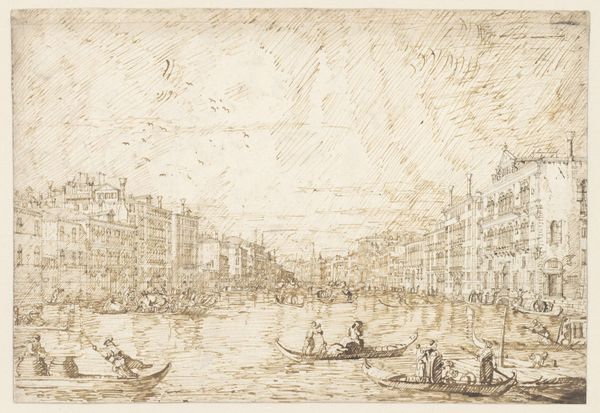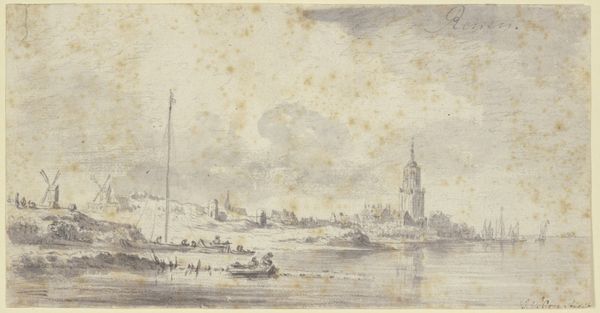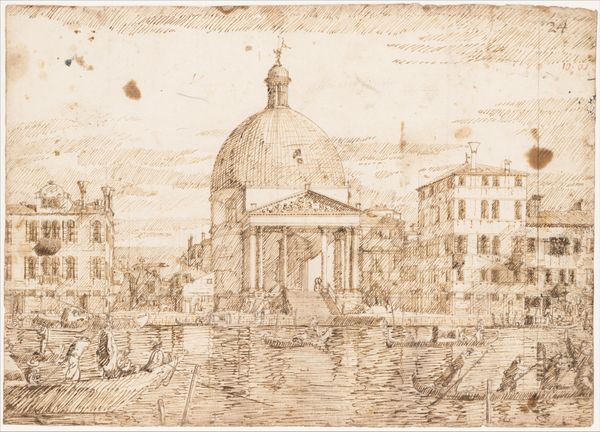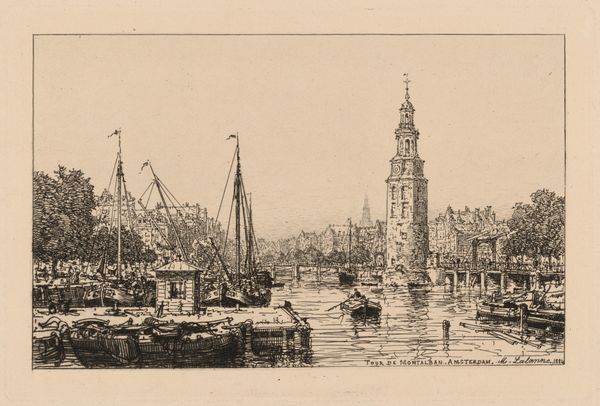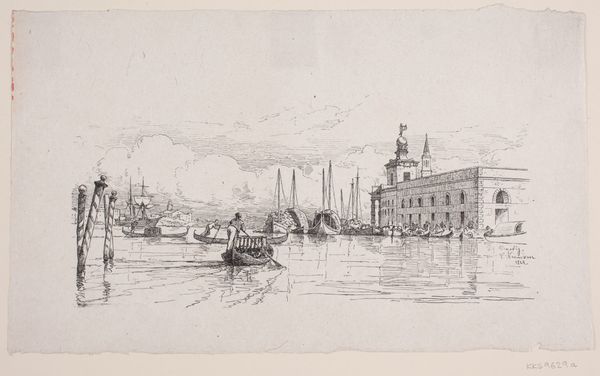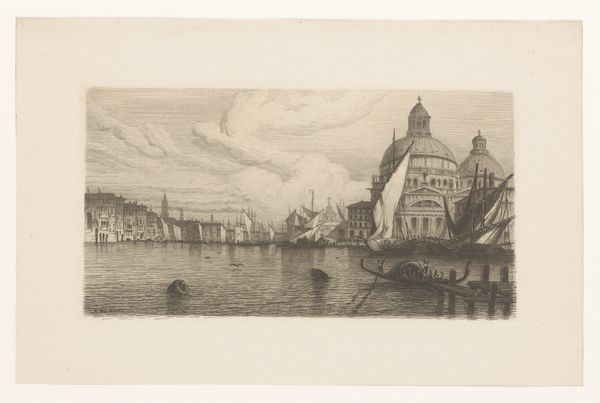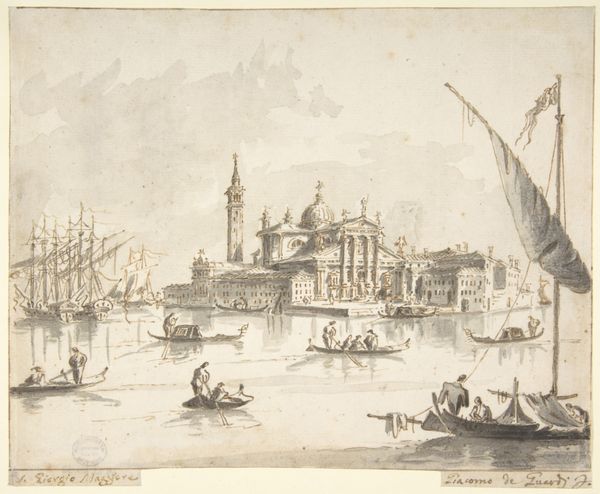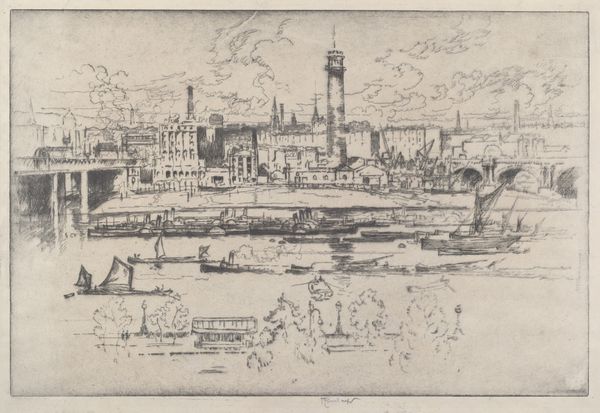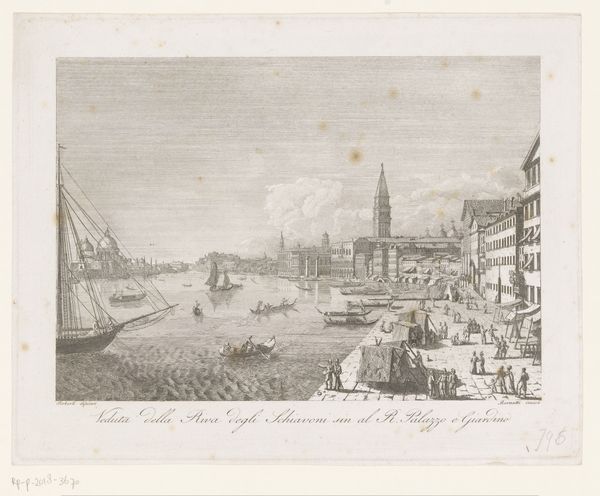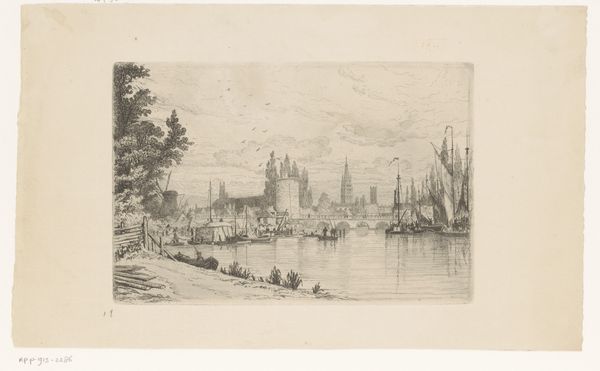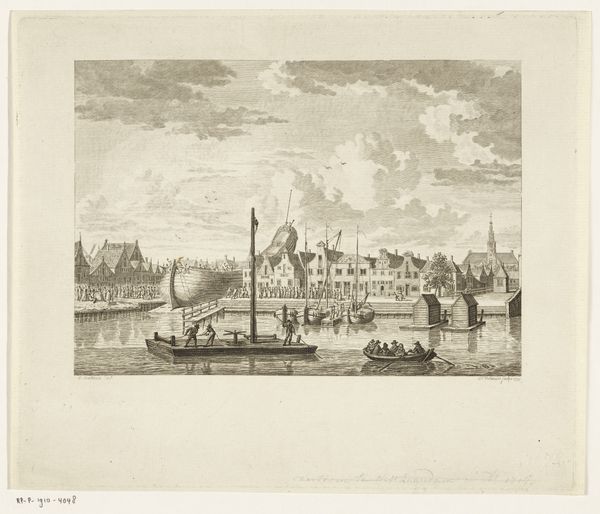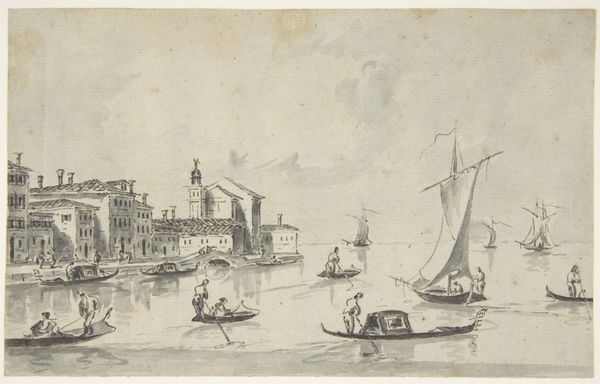
Copyright: National Gallery of Art: CC0 1.0
Curator: Today, we’re looking at Joseph Pennell’s etching, “The Doge’s Palace,” created in 1883. It's a marvel of line work and atmosphere, don't you think? Editor: Absolutely! It feels almost like a dream. A shimmering memory. I imagine the Grand Canal is slick with something golden, reflecting every secret whispered from the balconies. Curator: Indeed. Pennell masterfully uses etching to capture the unique light and architectural density of Venice. Notice the staccato marks defining the Doge's Palace. There’s a systematic approach even within the impressionistic haze. The repetitive nature of the Palace facade provides an echo. Editor: Repetition. It’s like he’s trapped the rhythm of the water right there on the paper. All those gondolas skimming about like water spiders. The Doge's Palace looking grand but also like it might dissolve back into the mist at any second. And, heavens, the Campanile piercing the skyline is so dramatic. I see movement and emotion everywhere! The masts reach to touch the Campanile as if seeking recognition, or divine guidance. Curator: His technique definitely emphasizes a dynamic spatial construction within the composition. He layers the elements. Editor: And it's so light, the etching almost makes the structures seem not so grand. Are the people lost, or simply enjoying the grandeur surrounding them? I'm going with 'lost', which creates some drama that makes it exciting! Curator: That sense of depth and light is vital. The technical prowess here shouldn't overshadow the artistry; the controlled gradation of tones gives form to this vista, transforming Venice into a compelling interplay between object and atmosphere. Editor: I quite agree! One can find the subtle drama and emotion Pennell conveys so elegantly using his formal technique. Thank you! Curator: Thank you. This really highlights his sensitivity to tone and structural components.
Comments
No comments
Be the first to comment and join the conversation on the ultimate creative platform.
